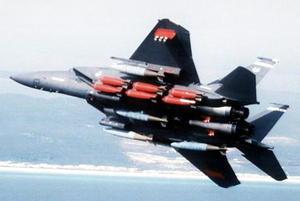China syndromeFake chips from China threaten U.S. military systems
To withstand the rigors of battle, the Defense Department requires the chips it uses to have special features, such as the ability to operate at below freezing temperatures in high-flying planes; because it pays extra for such chips, experts say, the Defense Department has become a prime target for counterfeiters, most of them Chinese companies; from November 2007 through May 2010, U.S. Customs officials said they seized 5.6 million bogus chips — yet many more are finding their way into the United States and even the military

Chinese counterfeit chips threaten safety of military hardware // Source: howstuffworks.com
A growing deluge of millions of counterfeit chips is posing peril to the U.S. military and the general public — and perhaps nothing illustrates it better than a scheme federal prosecutors recently revealed that stretched from Southern California to Silicon Valley.
Mustafa Aljaff and Neil Felahy, a Newport Beach pair indicted in October, have admitted importing from China more than 13,000 bogus chips altered to resemble those from legitimate companies, including local firms Intel, Atmel, Altera, and National Semiconductor. Among those buying the chips was the U.S. Navy.
The Mercury News’s Steve Johnson writes that it was not the first time the military has been hoodwinked. Separate studies this year by the Commerce Department and the Government Accountability Office (GAO) concluded that the U.S. armed forces — which use chips in everything from communications and radar systems to warplanes and missiles — are alarmingly vulnerable to fakes.
Commerce officials partly blamed the Iraq and Afghanistan wars for diminishing the supplies of chips the military normally uses for equipment repairs and forcing it to rely on questionable dealers for replacement parts. Moreover, both studies cited serious flaws in the Pentagon’s procedures for spotting sham components (see “Counterfeit chips may hobble advanced weapons,” 30 October 2009 HSNW; and “Operation targeting counterfeit network hardware from China yield convictions, seizures,” 12 May 2010 HSNW).
Whether any of the fakes sold by Aljaff and Felahy went into vital defense systems isn’t clear. The Navy declined to comment, saying the case remains under investigation. Nonetheless, recent reports have described several close calls the military has had with bogus chips.
That same month, Tobyhanna Army Depot in Pennsylvania discovered it had malfunctioning chips intended for use in military communications systems. “The counterfeit chips failed during testing” and were not put on any equipment, said depot spokesman Anthony Ricchiazzi.
In November of last year, a Florida business that makes a device to keep injured pilots from becoming entangled in their parachutes reported finding a counterfeit chip in one of the devices and other fakes in its supply chain. None of the devices were known
